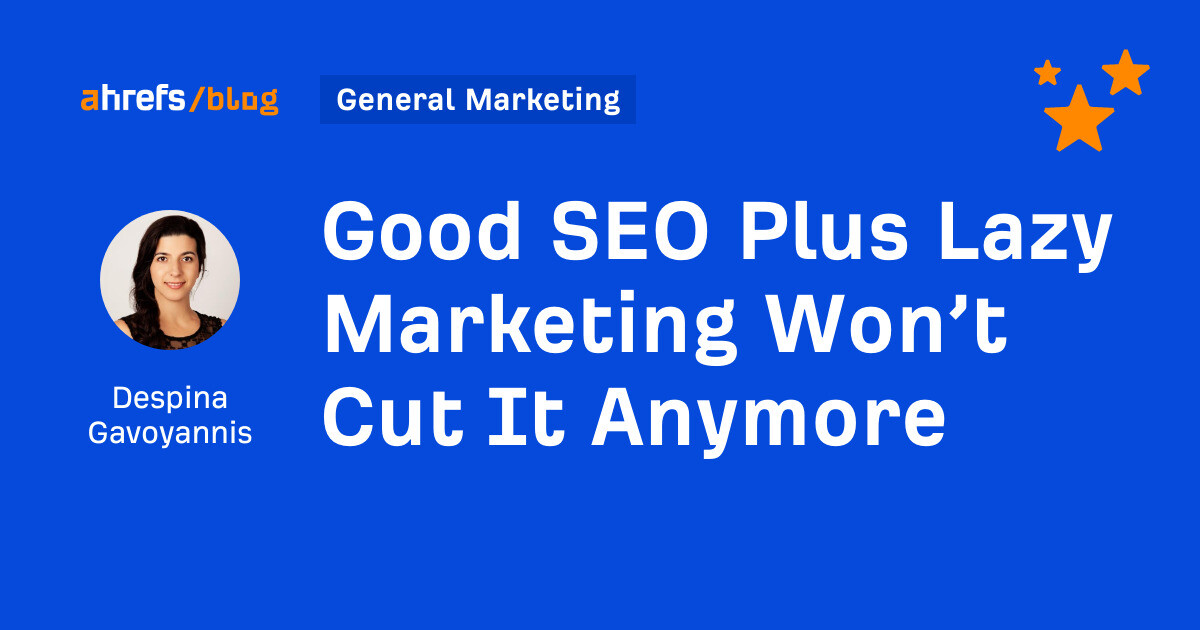Aligning The CIO, CFO & CMO For Search‑Driven ROI via @sejournal, @TaylorDanRW
As AI search redefines visibility, brands must shift from ranking to relevance. This is where leadership must step up. The post Aligning The CIO, CFO & CMO For Search‑Driven ROI appeared first on Search Engine Journal.

The traditional linear path from awareness to conversion is no longer the norm.
Users today interact with generative engines like ChatGPT, Gemini, and Perplexity, as well as voice interfaces and proprietary search platforms that bypass the familiar search engine results pages (SERPs) entirely.
In this landscape, classic SEO tactics alone are no longer enough.
AI compresses the consideration phase by combining information from multiple sources into a single trusted output. A user no longer needs to review 10 blue links and click through to various websites.
Instead, they ask a question and receive a concise, reasonably tailored response. This change forces brands to reassess their approach to competing for visibility.
Visibility within AI-generated results is driven less by paid placement and more by a mix of expert content, credible signals, and structured data.
Brands need to focus on the depth and clarity of their expert-led content, build strong reputational signals across third-party platforms, and ensure their use of schema and structured data supports inclusion in AI summaries.
They must also prioritize being referenced in the knowledge bases and datasets these AI systems rely on.
As discovery becomes more conversational and context-led, users no longer refine keywords. They follow intent-led journeys. Discovery is shifting from a focus on ranking to one of relevance.
To remain visible, organizations must realign their digital strategies to align with how generative models perceive trust and authority.
This requires joined-up efforts across technology, finance, and brand leadership, with specific responsibilities falling to the Chief Information Officer (CIO), Chief Financial Officer (CFO), and Chief Marketing Officer (CMO) – the C-level triumvirate.
The CIO
Structured machine-readable data is essential for visibility in AI-driven search.
The CIO plays a crucial role in ensuring that content is accessible and optimized across the systems on which AI models rely.
This includes enabling discoverability across platforms, offering APIs and knowledge graphs that large language models can use, and upholding data security and compliance when sharing information.
Modernizing content infrastructure is vital. Enterprise content must be indexable, high-performing, and properly structured to ensure optimal search results.
Beyond the web, CIOs must consider how enterprise knowledge is externalized and leveraged. Are internal repositories accessible in structured formats? Is brand data mapped to schemas recognized by AI systems? Can content be updated in real-time to maintain accuracy?
CIOs must also work closely with legal and compliance teams to ensure effective collaboration and compliance.
Together, they need to define governance rules for exposing data to AI models, set rate limits and permissions, and use synthetic or anonymized data when required.
True agility is not just about building flexible systems; it’s also about embracing change. It is about creating AI-native structures that support clean data flows, reduce technical debt, and prepare for how emerging technologies will consume information.
The CFO
Traditionally, marketing spending has been assessed through direct attribution. However, AI search enables complex, non-linear journeys and ambient brand exposure that may not result in clicks but still significantly influence buying decisions.
CFOs must update financial models to reflect these softer signals. Budgets should focus on readiness, high-quality content, strong data structures, and AI-aligned infrastructure rather than just media spending.
Attribution models must include interactions with AI systems, even when those are indirect.
Mentions or recommendations by AI engines build brand trust and influence intent, even without a direct click. These harder-to-measure moments still matter and should be included in attribution models and long-term planning.
CFOs should approve investment in ongoing content creation, structured knowledge bases, and systems that help AI access and trust their content.
Like building physical infrastructure, this work offers lasting benefits and positions the brand for visibility as AI search becomes the norm.
The challenge is to shift from short-term performance to long-term discoverability and influence.
The CMO
In an AI-driven search world, visibility is shaped by more than just brand storytelling. It depends on how the brand is reflected in the data that powers these systems.
AI models combine answers from multiple sources, meaning the brand narrative is heavily influenced by third-party data, structured content, and the quality of information shared across the web.
The CMO must ensure the brand becomes the trusted answer, not just another mention. This involves managing messaging across all content areas, including earned, owned, and partner-based content, while ensuring that citations, expert profiles, and trusted content are indexed and referenced.
Strategic visibility needs clear, joined-up messaging. AI rewards consistency and authority. Fragmented messaging weakens both.
That is why CMOs need to bring together PR, product marketing, and content teams to create a unified narrative that AI can recognize and rely on.
Accurate strategic positioning means the brand is present before the user arrives, built into the answers AI provides. This is about planning for visibility at the knowledge level, not just the content level.
In a world of automated systems and answer engines, this is where trust and competitive edge are built.
Reporting On AI-Driven Visibility: Metrics That Matter
To keep leadership aligned and justify investment, organizations need useful cross-functional metrics that reflect visibility in AI-led environments. These indicators matter across CIO, CFO, and CMO roles.
Share of Voice: Measures brand presence across AI platforms compared to competitors. Useful for CMOs watching narrative authority. Organic Traffic Value: Assigns a value to organic traffic by estimating what the same reach would cost through paid ads. Important for CFOs tracking return. Presence in AI Summaries and Snapshots: Tracks how often the brand appears in AI answers or summaries. It helps gauge marketing and strategic visibility. LLM Prompt Coverage: Checks how discoverable content is across known large language model datasets and guides CIOs in content infrastructure planning. Non-Click Influence Metrics: Captures mentions, impressions, and indirect interactions in AI systems. Signals have a broader impact on user choices. Entity Graph Coverage: Tracks inclusion in structured databases like Google Knowledge Graph or Wikidata. Reflects data readiness and visibility.By linking these metrics to executive goals, financial impact, technical performance, and brand strategy, organizations can ensure that their AI search efforts are effective and measurable.
Executive Alignment Is Non-Negotiable
AI search is not just another channel. It is a new space for enterprise visibility. Success depends on joined-up action across leadership. The CIO must build compliant, scalable systems.
The CFO must back smart investments in discoverability. The CMO must craft a brand story that AI can understand.
A real advantage emerges when these roles are united around a single strategy, combining technical flexibility, financial foresight, and a straightforward narrative.
When leadership is aligned, organizations do not just react to AI – they leverage it.
In a world where visibility comes from connected data, the winning brands will treat discoverability not as a marketing goal but as a core part of how they operate and lead.
More Resources:
How CMOs Can Tell Stories To Manage Change [Case Study With Mondelēz International] A Guide To Enterprise SEO Strategy For SaaS Brands 5 Key Enterprise SEO Priorities CMOs Need To Get RightFeatured Image: Roman Samborskyi/Shutterstock

 JaneWalter
JaneWalter 








![Stop Paying the Google Ads Tax Without Realizing It [Webinar] via @sejournal, @hethr_campbell](https://www.searchenginejournal.com/wp-content/uploads/2025/06/3-935.png)










![The 2026 AI Search Benchmark Every SEO Leader Needs [Webinar] via @sejournal, @lorenbaker](https://www.searchenginejournal.com/wp-content/uploads/2025/11/1-259.png)







(1).jpeg)



